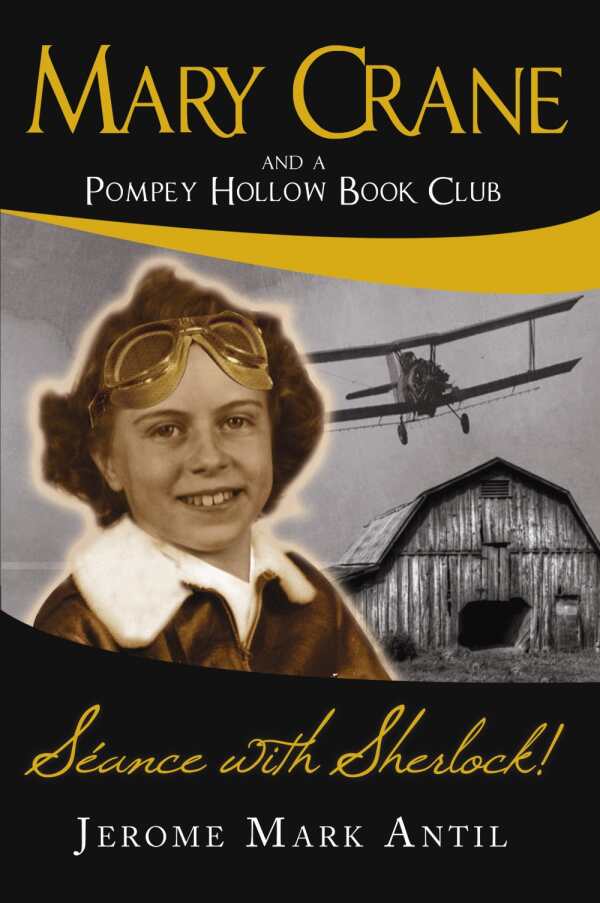Mary Crane and a Pompey Hollow Book Club Seance with Sherlock!
Book 3
This wholesomely earnest novel is peppered with a dash of old-school mischief and fun.
Jerome Mark Antil’s Mary Crane and a Pompey Hollow Book Club Séance with Sherlock, the latest installment in the adventures of the Pompey Hollow kids, continues the group’s spirited adventures. The club members—all boys except for the steadying influence of President Mary Crane—make their early-teen way through 1950s upstate New York with the help of guardian angel and former neighbor Charlie Pitts, best known as “Ole Charlie.” The tone of the novel is wholesomely earnest, peppered with a dash of old-school mischief and fun.
Antil’s love for his subject matter and familiarity with the postwar backdrop of this specific region give Pompey Hollow a color and warmth that only true nostalgia can provide. Surely these were simpler times than our own, though not necessarily better or easier. The shadow of the Great Depression lingered, with not-so-distant memories of—as one character notes—having to live on very little and somehow manage to make a chocolate layer cake “with everything but chocolate.” And while the United States had recently triumphed in World War II, no great victory is ever won without casualties or sacrifice.
In the autumn of 1953, the Book Club and friends find themselves caught up in a caper involving a former war pilot and a crafty British pickpocket, while Ole Charlie meets fellow angel and revered author Sir Arthur Conan Doyle. There are barn chores and barn dances, the state fair, a traveling theater group, and a grade school teacher with some pretty impressive skills as a con artist. To add to the narrative, Antil includes historical photos along with “Paracoustics” sound effects. These sound snippets in the form of QR codes allow smartphone users to scan and hear relevant moments of action.
Despite the nod to modern technology, Mary Crane and a Pompey Hollow Book Club Séance with Sherlock will likely appeal to those who actually lived the times, or to young adults with a fascination for days gone by. A lack of cynicism and openness to the concept that teens were perhaps more mature yet less sophisticated sixty years ago might also help their twenty-first-century counterparts truly appreciate the story.
In certain aspects, the novel seems reminiscent of author Elizabeth Enright’s Melendy Family series of the 1940s, offering a similar sense of camaraderie and fairly innocent adventure. Antil’s shifting perspective may sometimes become a bit confusing, but the general effect is a story with heart and plenty of good old-fashioned imagination.
Reviewed by
Meg Nola
Disclosure: This article is not an endorsement, but a review. The publisher of this book provided free copies of the book and paid a small fee to have their book reviewed by a professional reviewer. Foreword Reviews and Clarion Reviews make no guarantee that the publisher will receive a positive review. Foreword Magazine, Inc. is disclosing this in accordance with the Federal Trade Commission’s 16 CFR, Part 255.

